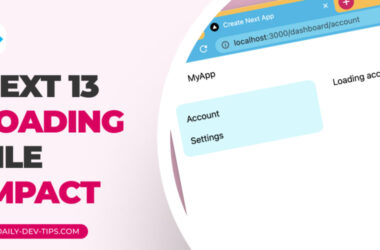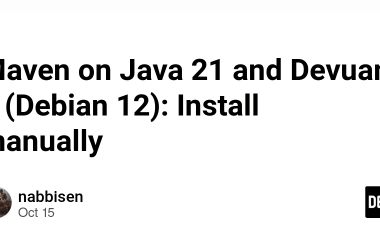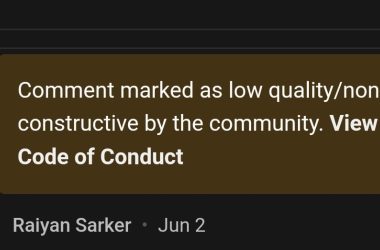The promise of infrastructure automation is seductive. Run the same configuration once, run it a thousand times, and you’ll get exactly the same result. No drift. No surprises. No 3am phone calls because someone’s “quick fix” in production has cascaded into a full-blown outage. This is the gospel of idempotency, and it’s preached with religious fervour across DevOps teams worldwide.
There’s just one problem: it’s largely a fiction.
Not a complete lie, mind you. More like a convenient simplification. The kind of aspirational truth that looks brilliant on architecture diagrams but crumbles when it encounters the chaotic reality of production systems. Your infrastructure isn’t truly idempotent, it never was, and chasing that particular dragon might actually be making things worse.
Before the pitchforks come out, let’s be clear about what we’re actually discussing. Idempotency, in the context of infrastructure automation, means that applying the same configuration multiple times produces the same result. Execute your Terraform plan once, execute it a hundred times, and your cloud environment should look identical each time. It’s deterministic. It’s predictable. It’s beautiful.
It’s also almost impossible to achieve in practice.
The Illusion of Perfect Automation
The infrastructure-as-code revolution promised to transform how we manage technology. Tools like Terraform, Ansible, Puppet, and Chef emerged as saviours, offering to codify our infrastructure and make it reproducible. The pitch was compelling: treat your servers like cattle, not pets. Build immutable infrastructure. Achieve true idempotency.
Early adopters became evangelists. Conference talks overflowed with success stories. The message was clear: if you’re still manually configuring servers, you’re doing it wrong. The future is automated, declarative, and perfectly idempotent.
But something funny happened on the way to infrastructure nirvana. The tools themselves started revealing the cracks in the foundation.
Terraform, designed from the ground up to be idempotent, includes a whole category of resources that explicitly break idempotency. Provisioners, particularly the local-exec and remote-exec types, execute arbitrary commands that can have side effects. They might work perfectly the first time, fail catastrophically the second, or (worst of all) silently produce different results each execution. HashiCorp’s own documentation warns against their use, yet they persist in codebases everywhere because sometimes you genuinely need to do something that doesn’t fit neatly into the declarative model.
Ansible, built around the concept of idempotent modules, makes it trivially easy to execute non-idempotent operations. The shell and command modules, staples of most playbooks, make absolutely no guarantees about idempotency. They execute whatever you tell them to execute, consequences be damned. The framework provides the tools to build idempotent automation, but it can’t prevent you from shooting yourself in the foot.
The truth is that pure idempotency conflicts with the messy reality of how infrastructure actually works. Systems have state. That state changes over time. External factors influence behaviour. Network conditions vary. API rate limits kick in. Concurrent operations interfere with each other. The universe, it turns out, is not particularly concerned with our desire for deterministic infrastructure.
Consider the complexity of modern cloud platforms. AWS alone offers over 200 services, each with its own API, rate limits, eventual consistency characteristics, and failure modes. When your Terraform configuration interacts with these services, it’s not operating in a vacuum. Other systems are simultaneously modifying the same resources. Cloud provider maintenance windows introduce temporary inconsistencies. Global infrastructure means that what’s true in one region might not yet be true in another due to replication lag.
This isn’t a criticism of cloud providers. It’s the fundamental nature of distributed systems. The CAP theorem tells us we can’t have consistency, availability, and partition tolerance simultaneously. Cloud platforms choose availability over immediate consistency, which means your perfectly idempotent Terraform configuration is executing against infrastructure that doesn’t guarantee immediate consistency.
The Drift That Dare Not Speak Its Name
Configuration drift is the ghost in the machine of modern infrastructure. It’s the silent killer that everyone knows about but nobody wants to acknowledge, because doing so would mean admitting that our carefully constructed automation frameworks are fundamentally leaky abstractions.
The 2024 Uptime Institute Annual Outage Analysis revealed that 74% of outages were attributed to mission-critical infrastructure failures. More than half of these incidents cost organisations over £80,000, with 16% exceeding £800,000 in damages. The culprit? Often, it’s drift: the gradual accumulation of tiny differences between what your infrastructure should be and what it actually is.
Here’s how drift typically happens: It’s Friday afternoon. Production is struggling under unexpected load. An engineer opens a support ticket. The on-call responder, under pressure to resolve the issue quickly, logs into the AWS console and manually increases the instance size. Problem solved. Traffic normalises. Everyone goes home happy.
Except the infrastructure code still specifies the old instance size. The state file might reflect the change, or it might not, depending on whether anyone remembered to refresh it. The next time someone runs a Terraform plan, they’ll see a diff. Will they apply it, reverting the production change and potentially causing another incident? Will they update the code to match reality? Will they simply ignore the drift, letting it accumulate alongside dozens of other “temporary” manual changes?
This isn’t a hypothetical scenario. It’s how infrastructure evolves in the real world. The 2024 data shows that cloud service provider outages climbed from 17% to 27% of all outages, whilst ISP outages decreased from 83% to 73%. Many of these cloud outages stemmed from configuration inconsistencies and automated system failures (drift by another name).
The healthcare sector provides particularly stark examples. In 2022, a healthcare provider experienced critical system failures when electronic health record systems became inaccessible due to inconsistencies in database configurations across multiple servers. Patient care was disrupted. The root cause? Configuration drift that accumulated over months, each small change seeming insignificant in isolation but collectively creating a system too fragile to withstand routine maintenance.
Consider the OpenAI outage in 2024, which brought down ChatGPT and related services. A new telemetry service deployment unintentionally overwhelmed the Kubernetes control plane, causing cascading failures across critical systems. This is drift in action: a change made with good intentions, inadequately tested against the actual production environment, interacting with existing systems in unexpected ways.
Or look at Microsoft’s Outlook Online outage from the same year, where timeout errors and HTTP 503 status codes plagued users worldwide. Microsoft confirmed that problems stemmed from a configuration change that caused an influx of retry requests routed through servers. The change itself was likely idempotent in isolation, but its interaction with the broader system created emergent behaviour that nobody predicted.
The CrowdStrike incident of July 2024 provides perhaps the most spectacular example of automation gone wrong. A faulty security update wreaked havoc on Microsoft Windows systems worldwide, causing what industry analysts called one of the largest IT outages in history. The update process was designed to be automated and reliable. It was tested. It should have been safe. But the real world had other ideas.
What makes drift particularly insidious is its gradual nature. A single manual change rarely causes immediate problems. It’s the accumulation of dozens or hundreds of small deviations that creates system fragility.
The Achilles Heel
At the heart of infrastructure idempotency lies state management, and state management is where things get truly messy. Terraform’s state file is supposed to be the source of truth, the authoritative record of what infrastructure exists and how it’s configured. In practice, it’s more like a best guess that occasionally reflects reality.
State file corruption is a well-documented phenomenon in the Terraform community. One particularly memorable case from 2021 involved a state file over 9MB in size where the character u0000 mysteriously appeared 620 times, affecting the dependencies list of 310 resources. The cause? An interrupted network connection during a state file update. The result? An infrastructure codebase that couldn’t be applied without extensive manual intervention.
The problem compounds when teams grow and collaboration increases. Two engineers running terraform apply simultaneously without proper state locking can corrupt resources and create inconsistencies that take hours or days to untangle. Remote state with locking solves some of these problems, but introduces others. What happens when the locking mechanism fails? What if the remote backend becomes unavailable? What if state files grow so large that operations timeout?
These aren’t edge cases. They’re documented, recurring problems that plague infrastructure teams across industries. The Terraform GitHub repository is littered with issues related to state corruption, concurrent modification, and drift detection. HashiCorp has produced extensive documentation on state restoration and recovery, precisely because these situations occur with depressing regularity.
The fundamental issue is that state management requires perfect synchronisation between three different representations of reality: the code, the state file, and the actual infrastructure. Any mismatch between these three creates drift. And mismatches are inevitable, because:
- Code changes are made by humans who make mistakes
- State files are updated over networks that have failures
- Actual infrastructure is modified by automated processes, manual interventions, cloud provider maintenance, and the occasional security incident
Achieving perfect synchronisation across all three, across time, across teams, across changing requirements, is a Sisyphean task.
The situation becomes even more complex when dealing with terraform workspaces, multiple environments, or hybrid cloud deployments. Each additional layer of abstraction introduces new opportunities for state divergence. Teams managing dozens of Terraform modules across development, staging, and production environments might maintain hundreds of state files, each potentially drifting independently.
Security adds another dimension to state management complexity. State files contain sensitive information: database passwords, API keys, encryption secrets. They must be stored securely, but also accessible to automation systems. Remote state backends address some security concerns but introduce operational dependencies. If your state backend becomes unavailable during an incident, you can’t apply changes to remediate the problem. You’ve traded one risk for another.
The Human Factor
There’s a persistent fantasy in DevOps circles that automation will eliminate human error. If we just codify everything, make it declarative, build it into pipelines, we can remove the unreliable human element from infrastructure management. This is, politely speaking, bollocks.
The 2024 Uptime Institute data reveals that direct and indirect human error contributes to approximately 66% to 80% of all downtime incidents. Automation hasn’t reduced this percentage; it’s arguably increased it by introducing new categories of errors: configuration mistakes that propagate across entire fleets, automated rollouts that push broken code to production, CI/CD pipelines that fail to catch issues before deployment.
The problem isn’t that humans are involved. It’s that we’ve created systems so complex that human operators can no longer fully understand them. A modern infrastructure stack might involve Terraform for provisioning, Ansible for configuration, Kubernetes for orchestration, service meshes for networking, observability platforms for monitoring, and half a dozen other tools, each with its own mental model, state management approach, and failure modes.
When something goes wrong (as it inevitably does), troubleshooting requires understanding how all these pieces interact. But no single person possesses that knowledge. The infrastructure has become too complex for individual comprehension. We’ve distributed the knowledge across team members, across documentation (that’s inevitably out of date), across runbooks (that assume things work as designed), and across tribal knowledge (that evaporates when people leave).
This complexity doesn’t just make troubleshooting harder; it makes achieving idempotency fundamentally more difficult. When you can’t fully understand your system, you can’t predict how changes will propagate through it. You can’t guarantee that applying the same configuration will produce the same result, because you can’t account for all the variables.
The cognitive load on infrastructure engineers has increased exponentially. Twenty years ago, a systems administrator needed to understand servers, networking, and perhaps a bit of scripting. Today’s infrastructure engineer must comprehend cloud provider APIs, infrastructure-as-code languages, container orchestration, service mesh architectures, observability platforms, security frameworks, compliance requirements, and cost optimisation strategies. The breadth of knowledge required exceeds what any individual can master completely.
Research from the State of DevOps reports consistently shows that organisational culture predicts software delivery and operational performance better than tools or technologies. Teams with generative cultures (those that focus on the mission and subordinate other concerns) significantly outperform those with pathological or bureaucratic cultures. Yet the conversation around infrastructure automation focuses overwhelmingly on tools rather than the cultural practices that enable their effective use.
The AI Wild Card
Just when we’d almost figured out how to manage infrastructure with traditional automation, artificial intelligence entered the chat. The promise? AI-driven infrastructure management that can predict failures, automatically optimise configurations, and achieve resilience beyond human capability. The reality? A whole new category of reliability problems.
Gen AI systems face higher failure rates than traditional infrastructure due to intense workloads and vast data processing requirements. The complex components (GPUs, networks, storage systems) that power these systems are precisely the elements most prone to failure. Even minor performance bottlenecks or hardware faults can cascade into significant issues, leading to degraded model accuracy, increased inference latency, or prolonged training times.
IBM’s CEO survey on generative AI platforms revealed that 61% of organisations cite concerns about data lineage and provenance, whilst 57% worry about data security. These aren’t peripheral concerns; they’re fundamental questions about whether AI-driven infrastructure can be trusted to make critical decisions autonomously.
The automation maturity statistics paint a sobering picture. Only 33% of organisations report having integrated systems or workflow and process automation. A mere 3% have achieved advanced automation via robotic process automation and AI/machine learning technologies. Over 45% of business processes remain paper-based. We’re trying to layer AI-driven infrastructure management onto operational foundations that haven’t even achieved basic automation.
Industry experts caution that AI tools for infrastructure management remain in their infancy, particularly for industrial reliability applications. Organisations shouldn’t abandon traditional automation initiatives in favour of untested AI tools. Yet the hype cycle pushes adoption faster than the technology matures, creating new categories of failures as teams deploy AI systems they don’t fully understand into infrastructure they couldn’t fully control in the first place.
The fundamental challenge is that AI systems operate on patterns learned from historical data, but infrastructure incidents often involve novel failure modes that don’t match historical patterns. The cloud service outage caused by an interaction between three different systems (each operating normally in isolation) doesn’t resemble previous incidents. The AI, having never seen this pattern, either misdiagnoses the problem or fails to recognise it as a problem at all.
Moreover, AI-driven automation can amplify mistakes with terrifying efficiency. A misconfigured rule that would cause problems for a handful of servers when applied manually can affect thousands of instances when automated through AI systems. The blast radius of errors increases proportionally with the scope of automation.
Embracing Productive Imperfection
So if true idempotency is unachievable, and drift is inevitable, and humans will continue making mistakes, and AI isn’t ready to save us, what’s the path forward? Surprisingly, it’s not despair. It’s pragmatism.
The first step is abandoning the fantasy of perfect automation. Your infrastructure will drift. Your state files will occasionally diverge from reality. Your “immutable” containers will sometimes need emergency patches. Accepting this isn’t defeat; it’s acknowledging the actual nature of complex systems.
The State of DevOps research defines resilience as “the ability of teams to take smart risks, share failures openly and continuously improve based on feedback.” This is fundamentally different from the traditional reliability approach of eliminating all failures through perfect engineering. Resilient systems expect failure, design for failure, and recover from failure gracefully.
Organisations achieving high software delivery performance don’t have perfect idempotency. They have strong feedback loops. They invest in observability that reveals what their infrastructure is actually doing, not just what they think it should be doing. They build monitoring that detects drift before it causes outages. They create runbooks that assume things will go wrong rather than pretending they won’t.
Transparency becomes crucial in this model. Teams need visibility into how infrastructure actually works, including the awkward manual changes, the “temporary” workarounds that became permanent, and the configuration drift that’s accumulated over months. This requires tooling that detects and surfaces discrepancies rather than hiding them.
Firefly, Snyk, and similar platforms have built businesses around drift detection precisely because traditional infrastructure-as-code tools don’t solve this problem adequately. These platforms continuously compare actual infrastructure against defined configurations, alerting teams to discrepancies. They don’t prevent drift (that’s impossible) but they make it visible and manageable.
The most effective teams integrate drift detection into their CI/CD pipelines. Scheduled pipeline runs check for infrastructure changes even when no new code is pushed, catching manual modifications, external automation, or cloud service updates before they cause problems. When drift is detected, the pipeline doesn’t silently ignore it or automatically revert changes. Instead, it triggers a review process. Humans evaluate the drift, determine whether it should be codified or reverted, and make informed decisions.
This approach acknowledges that sometimes manual changes are necessary. The engineer who increased instance sizes on Friday afternoon might have been responding to legitimate production needs that the infrastructure code didn’t account for. The solution isn’t punishing the engineer or automatically reverting the change. It’s updating the process to capture that operational knowledge and incorporate it into the codebase.
Designing for Drift
If drift is inevitable, infrastructure should be designed with drift in mind. This means building systems that are robust to minor variations rather than brittle to any deviation from the expected state.
Immutable infrastructure represents one approach to this problem. Rather than updating existing servers, you deploy new ones with each change. This eliminates certain categories of drift: server configurations can’t drift if servers are replaced rather than modified. But immutability introduces other challenges. It requires sophisticated orchestration to manage rolling deployments. It assumes you can tolerate the latency of provisioning new infrastructure. It works brilliantly for stateless services but struggles with stateful ones.
More importantly, immutability at the compute layer doesn’t eliminate drift at other layers. Your database configurations can still drift. Your network policies can diverge from the coded state. Your IAM permissions can accumulate over time. Immutability is a tool, not a panacea.
A more comprehensive approach involves building resilience at multiple levels:
At the infrastructure level, use remote state with proper locking mechanisms. Implement drift detection that runs regularly, not just during deployments. Version your infrastructure code aggressively, making it easy to see what changed and when. Document known divergences rather than pretending they don’t exist.
At the organisational level, create cultures that reward transparency over heroics. When engineers make manual changes to address production issues, the process should encourage documenting those changes and updating the infrastructure code, not hiding the modifications to avoid criticism. Post-mortem processes should focus on learning rather than blame.
At the tooling level, invest in observability that reveals actual system behaviour. Traditional monitoring tells you whether services are up or down. Observability tells you why they’re behaving as they are, what changed recently, and how the current state compares to previous states. This context is essential for managing drift effectively.
At the operational level, accept that some percentage of infrastructure will always be managed semi-manually. Not everything belongs in code. Emergency responses to production incidents often require moving faster than pull request reviews allow. The goal isn’t eliminating manual changes. It’s creating processes that capture manual changes and incorporate them back into the automated pipeline.
The Cultural Dimension
The DevOps movement has always recognised that culture matters more than tools, yet discussions of infrastructure automation overwhelmingly focus on technical implementation. This is backwards. The most sophisticated automation framework will fail in an organisation with pathological culture that shoots the messenger, bureaucratic culture that values process over outcomes, or even generative culture that lacks the supporting practices to make automation effective.
Westrum’s organisational culture research identified three types: pathological (power-oriented), bureaucratic (rule-oriented), and generative (mission-oriented). Generative cultures share several characteristics relevant to infrastructure management:
- High cooperation across organisational boundaries
- Messengers of bad news are trained, not shot
- Responsibilities are shared
- Failure leads to inquiry, not scapegoating
- Novelty is implemented
- Information flows effectively
These cultural attributes enable teams to handle infrastructure imperfection productively. When drift is discovered, generative cultures investigate root causes rather than searching for someone to blame. When automation fails, they examine systemic issues rather than attributing problems to individual incompetence. When manual interventions prove necessary, they update processes rather than rigidly enforcing rules that don’t match operational reality.
Building this culture requires deliberate effort. It means celebrating the engineer who discovers and reports significant drift rather than criticising them for the drift existing. It means treating post-mortems as learning opportunities where teams collaboratively identify improvements rather than theatrical performances where individuals are held accountable for systemic failures.
It means accepting that infrastructure automation is a journey, not a destination. You’ll never achieve perfect idempotency because perfect idempotency exists only in theoretical computer science papers, not in production environments running real workloads serving actual users. The goal isn’t perfection. It’s continuous improvement.
Fostering this culture requires leadership commitment. When executives demand flawless execution and punish failures, teams hide problems rather than addressing them. When leadership treats failures as learning opportunities and celebrates transparency, teams share information freely and collaborate on solutions. The cultural foundation determines whether technical practices succeed or fail.
Living with Chaos
The infrastructure automation story we’ve told ourselves goes something like this: manual processes are unreliable, automated processes are reliable, therefore maximising automation maximises reliability. It’s a tidy narrative. It’s also substantially wrong.
The actual story is messier: manual processes are unreliable, automated processes are differently unreliable, and maximising automation without corresponding increases in observability, incident response capability, and cultural sophistication creates new categories of failures that can be worse than the problems automation was supposed to solve.
The CrowdStrike incident exemplifies this. Automated update mechanisms pushed a faulty configuration to millions of systems simultaneously, creating an outage of unprecedented scale. Manual update processes might have caught the issue affecting a smaller subset of systems, limiting the blast radius. The automation amplified the failure.
This doesn’t mean abandoning automation (that ship has sailed, and nobody wants to return to manually configuring thousands of servers). It means adopting a more sophisticated understanding of what automation can and cannot achieve.
Automation excels at consistency and scale. It ensures that configuration changes are applied identically across infrastructure. It manages complexity beyond human capability. It enables infrastructure that would be impossible to operate manually.
Automation struggles with novelty and edge cases. It applies configurations blindly without considering context. It can propagate mistakes as efficiently as it propagates fixes. It creates brittle systems that fail catastrophically rather than degrading gracefully.
The art of modern infrastructure management lies in using automation for what it does well whilst maintaining human oversight and intervention capability for what it doesn’t. This means:
- Automate provisioning and configuration, but build in approval gates for significant changes
- Use infrastructure-as-code for reproducibility, but accept that production environments will diverge from code
- Implement continuous deployment for speed, but maintain rollback procedures for when deployments go wrong
- Deploy AI-driven optimisation where it adds value, but keep humans in the loop for critical decisions
- Strive for idempotency as an ideal, but design systems that tolerate imperfection
Progressive deployment strategies offer one approach to managing automation risk. Rather than pushing changes to all infrastructure simultaneously, deploy to a small subset first, monitor for issues, then gradually expand the rollout. Canary deployments, blue-green deployments, and feature flags all embody this principle: change gradually, monitor continuously, roll back quickly when necessary.
The Path Forward
Organisations succeeding with infrastructure automation share common characteristics that have little to do with tool selection and everything to do with operational maturity.
They invest heavily in observability, understanding that you can’t manage what you can’t see. This goes beyond basic monitoring to include distributed tracing, comprehensive logging, infrastructure-level metrics, and correlation capabilities that connect changes to outcomes. When drift occurs, these organisations detect it quickly and understand its implications.
They practice continuous improvement through structured incident response. Post-mortems identify systemic issues and lead to concrete changes in tools, processes, or practices. Runbooks evolve based on actual operational experience rather than theoretical expectations. Teams regularly review and update their automation, removing technical debt before it becomes critical.
They maintain strong documentation cultures. Not the type where documentation is created once and never updated, but living documentation that reflects current operational reality. When manual changes occur, they’re documented. When automation behaves unexpectedly, the investigation and resolution are captured. When tribal knowledge exists, it’s systematically extracted and shared.
They balance automation with flexibility. Standards exist but can be deviated from when necessary, with appropriate review and documentation. Emergency procedures allow rapid manual intervention whilst ensuring those interventions are captured and analysed. Automation is viewed as a tool to enhance human capability rather than eliminate human judgement.
They focus on resilience over reliability. Rather than attempting to prevent all failures through perfect engineering, they build systems that fail gracefully, recover quickly, and provide learning opportunities for continuous improvement. They test failure scenarios, practice incident response, and design infrastructure with failure domains that limit blast radius.
Most importantly, they cultivate generative cultures where information flows freely, responsibilities are shared, and failures lead to inquiry rather than punishment. This cultural foundation makes everything else possible.
These organisations also invest in ongoing learning and skill development. Infrastructure technologies evolve rapidly. Yesterday’s best practices become tomorrow’s antipatterns. Teams need time and resources to explore new tools, experiment with different approaches, and share knowledge across the organisation.
The Idempotency Paradox
Here’s the paradox at the heart of infrastructure automation: the pursuit of perfect idempotency can make systems more fragile, whilst accepting imperfection can lead to greater resilience.
Teams that demand perfect idempotency often build brittle systems that fail catastrophically when reality diverges from expectations. They invest enormous energy trying to prevent drift rather than building systems that handle drift gracefully. They create cultures where manual intervention is seen as failure rather than pragmatic problem-solving.
Teams that accept imperfection as inevitable build robust systems designed for operational reality rather than theoretical ideals. They invest in detection and recovery rather than prevention alone. They create cultures where transparency is valued and learning is continuous.
Your infrastructure isn’t truly idempotent. It drifts. It accumulates manual changes. It develops inconsistencies between code, state, and reality. This is fine. This is normal. This is manageable.
The question isn’t how to achieve perfect idempotency (that’s chasing a mirage). The question is how to build infrastructure that delivers value reliably despite imperfection. How to create observability that reveals drift before it causes outages. How to develop processes that capture manual changes and incorporate them into automation. How to cultivate cultures that treat failures as learning opportunities rather than occasions for blame.
The seductive allure of faultless automation will always tempt us with promises of systems that run perfectly without human intervention. Resist that temptation. Embrace the reality that infrastructure management is fundamentally about managing complexity, uncertainty, and change. Build systems that are robust to drift rather than brittle to deviation. Create cultures that value transparency and learning over the illusion of perfection.
Your infrastructure isn’t really idempotent, and that’s actually fine. Stop trying to make it perfect. Start making it resilient instead. The goal isn’t eliminating human judgement from infrastructure management. It’s augmenting human capability with automation whilst maintaining the flexibility, creativity, and contextual understanding that humans provide. Balance the desire for consistency with the need for adaptability. Pursue continuous improvement rather than unattainable perfection.
In the end, the most reliable infrastructure isn’t the one with the most sophisticated automation or the strictest idempotency guarantees. It’s the one operated by teams with strong observability, clear processes for handling drift, cultures that encourage transparency, and the wisdom to know when automation helps and when human judgement is required. That’s the path forward. Not perfection, but productive imperfection. Not flawless automation, but resilient systems that accommodate human reality whilst leveraging automation’s strengths.
Sources and References
-
Uptime Institute. (2024). 2024 Annual Outage Analysis. Retrieved from https://datacenter.uptimeinstitute.com/
-
Bowale, O. (2024). Infrastructure as Code (IaC) Challenges: State Management, Idempotency, and Dependencies. DEV Community. Retrieved from https://dev.to/bowale/infrastructure-as-code-iac-challenges-state-management-idempotency-and-dependencies-f0b
-
Firefly. (2024). Implementing Continuous Drift Detection in CI/CD Pipelines with GitHub Actions Workflow. Retrieved from https://www.firefly.ai/academy/implementing-continuous-drift-detection-in-ci-cd-pipelines-with-github-actions-workflow
-
Snyk. (2024). Infrastructure drift and drift detection explained. Retrieved from https://snyk.io/blog/infrastructure-drift-detection-mitigation/
-
Network World. (2024). Top 8 outages of 2024. Retrieved from https://www.networkworld.com/article/3810508/top-8-outages-of-2024.html
-
Josys. (2024). The Cost of Ignoring Configuration Drift: Lessons from Real-World IT Failures. Retrieved from https://www.josys.com/article/the-cost-of-ignoring-configuration-drift-lessons-from-real-world-it-failures
-
Xavor. (2024). Top 6 Terraform State Management Issues and How to Fix Them. Retrieved from https://www.xavor.com/blog/terraform-state-management/
-
HashiCorp. (2024). Terraform State Restoration Overview. HashiCorp Help Center. Retrieved from https://support.hashicorp.com/hc/en-us/articles/4403065345555-Terraform-State-Restoration-Overview
-
Spacelift. (2024). Terraform vs. Ansible: Differences and Comparison of Tools. Retrieved from https://spacelift.io/blog/ansible-vs-terraform
-
Atlassian. (2024). DevOps Culture. Retrieved from https://www.atlassian.com/devops/what-is-devops/devops-culture
-
Google Cloud. (2024). How resilience contributes to software delivery success. Google Cloud Blog. Retrieved from https://cloud.google.com/blog/products/devops-sre/how-resilience-contributes-to-software-delivery-success
-
Amerruss. (2024). The 2024 Uptime Institute Annual Outage Analysis, and Why Data Centers Aren’t as Reliable as You Think. Retrieved from https://www.amerruss.com/post/the-2024-uptime-institute-annual-outage-analysis-and-why-data-centers-aren-t-as-reliable-as-you-thi
-
ServiceNow. (2024). 45 must-know automation statistics for 2024. Retrieved from https://www.servicenow.com/products/it-operations-management/automation-statistics.html
-
Cisco. (2024). Why Monitoring Your AI Infrastructure Isn’t Optional: A Deep Dive into Performance and Reliability. Cisco Blogs. Retrieved from https://blogs.cisco.com/learning/why-monitoring-your-ai-infrastructure-isnt-optional-a-deep-dive-into-performance-and-reliability
-
IBM. (2024). CEO survey on generative AI platforms. IBM Research.
-
Cloud Native Now. (2024). Ephemeral, Idempotent and Immutable Infrastructure. Retrieved from https://cloudnativenow.com/topics/ephemeral-idempotent-and-immutable-infrastructure/
-
Westrum, R. (2004). A typology of organisational cultures. BMJ Quality & Safety, 13(suppl 2), ii22-ii27.







